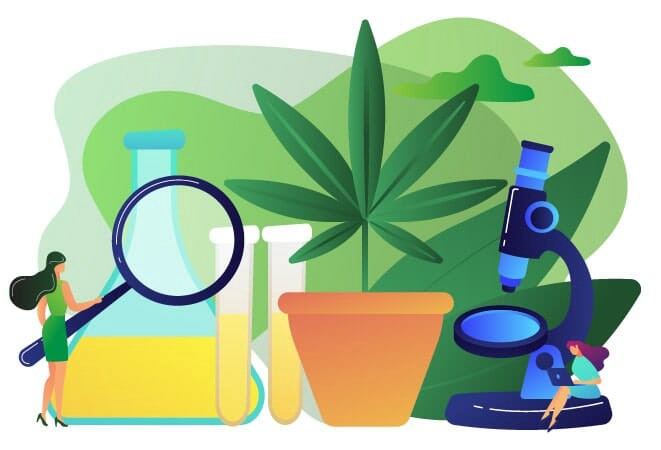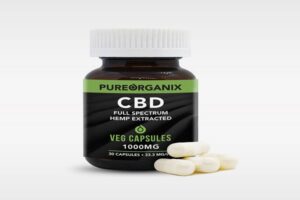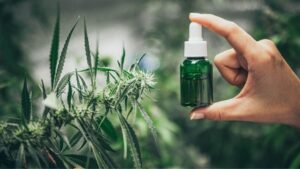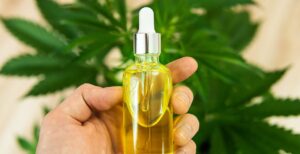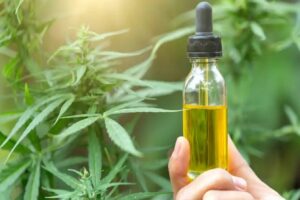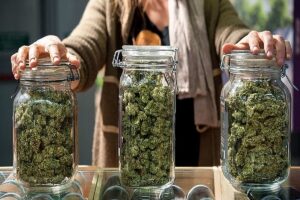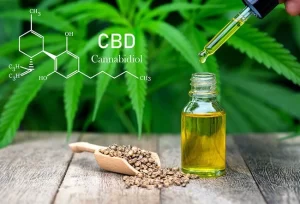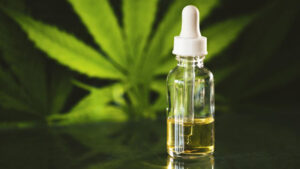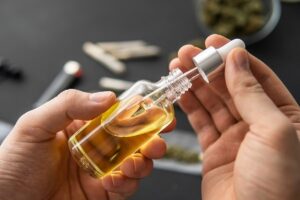Full Spectrum v/s THC Free
Full Spectrum v/s THC Free
When reading about CBD you have probably seen full-spectrum CBD oil and broad-spectrum/THC free CBD oil mentioned as you can buy either full spectrum or broad-spectrum CBD products.
So, what does each spectrum tell you about CBD oil products and how do they differ? Before we start let’s take a brief overview of CBD and why they matter for our health.
CBD and their role in our well-being
CBD is the natural phytochemicals found within the cannabis plant. There are over 113 identified CBD — with CBD and THC being the most thoroughly researched.
But why is CBD so important for our well-being…? Because they interact with the endocannabinoid system (ECS), a complex network of cannabinoid receptors and neurotransmitters located in the brain, central nervous system, peripheral nervous system, and immune system. The ECS controls a wide range of biological functions.
In 1995, researchers found that cannabinoids like CBD and THC could benefit the body and brain in many ways. Later, they discovered that each cannabinoid has a unique relationship with the endocannabinoid system. For example, THC induces psychoactive effects linked to “getting high.” CBD however is not. In other words, it will not make you high. In fact, it can even alter the psychoactive effects of THC as it delivers a range of health benefits.
What is Full-Spectrum CBD?
If an extract is full-spectrum, this means it contains all phytochemicals naturally found in the plant, including CBD, trace cannabinoids, terpenes, and essential oils. Full-spectrum extracts from hemp also come with a negligible THC content — below 0.2%.
The full spectrum of the active compounds extracted from hemp work together to increase the health benefits of each individual cannabinoid. This phenomenon is referred to as the entourage effect.
Although non-psychoactive, full-spectrum CBD can in very rare cases show up in a drug test. If you do want that guarantee this is where THC Free/ broad-spectrum comes in.
What is Broad Spectrum CBD?
Broad-spectrum CBD contains cannabidiol and all the other compounds within the plant, apart from THC, which is completely removed.
Because broad-spectrum extracts contain multiple cannabinoids, they also produce the “entourage effect,” but without the THC.
To simplify, broad-spectrum CBD contains the entire spectrum of cannabinoids except for the THC part. So if you were in the police force, security services or a teacher, this may be the better option for you.
Which Spectrum Should You Choose?
Now that you have gone through the spectrums of CBD, you’re probably hesitating on the final choice, wondering why someone would select one type over the other. First of all, do not think that one spectrum is better than the other. Everyone reacts differently to CBD and has different needs, so this is what you should base your judgment on — namely, which CBD spectrum will work best in your case.
To help you make your mind up, we have mapped out some of the pros and cons of each type, along with examples each spectrum would probably work best for.
Full Spectrum CBD: Pros & Cons
Pros
- Allows the user to benefit from the entourage effect
- The least processed form of CBD
- Contains terpenes and flavonoids for additional health benefits
Cons
- May show up on a drug screening
Full-Spectrum CBD is best For:
- CBD users who want to benefit from the trace amounts of THC in their extracts as THC can bring it’s own benefits
- Individuals with more severe symptoms.
When first starting with CBD, start with either a full spectrum 5%, or even a 2.5% CBD oil.
THC / Broad-spectrum CBD: Pros & Cons
Pros
- Offers the full benefits of the entourage effect
- Less processed than isolate
Cons
- Will not show up on a drug screening
Broad Spectrum Works is best for:
- Individuals sensitive to THC
- Individuals working in places with harsh THC regulations
- First-time CBD users cautious of THC
- If you have to have regular drug tests.
When first starting with CBD, start with either a THC 5% or even a 2.5% CBD oil.
Conclusion
There are many factors that can point you in the direction of one CBD spectrum instead of the other.
Your unique body chemistry, your weight, lifestyle, as well as your history with other supplements — each of these factors can influence the way you react to different cannabinoid profiles.
For some, THC FREE CBD may be the best choice as it delivers some of the entourage effects without the psychoactive effects of THC and others will need more THC to feel the difference.
There is still much research to be done to monitor the effectiveness of each spectrum, so the best thing you can do for now is a little trial and error to figure out which option you prefer. Always start low and grow slow and be assured that with Agape Peace, you’re getting a safe, quality product.
